
Hello readers and new readers, and apologies for missing a post last week. My summer migraines have apparently returned and have slowed down my writing and editing. This week, I’m sharing a few favorite photos from the second half of May.
Photos have image descriptions in the alt text, but I’m not able to record a voiceover this week.
I believe this grasshopper, which reminds me of a sculpture of brilliantly painted red porcelain with gold edges, is a nymph of the species Eotettis pusillus, Little Eastern Grasshopper. I found it clinging to a wildflower stem in the Fall Line Sandhills.
In a Middle Georgia bog, I nearly stumbled across this lone tuberous grasspink orchid (Calopoon tuberosus).
Mid-May also brought me to the mountains of North Georgia — specifically Lake Burton, where I was searching for the Mother of All Broods of Periodical Cicadas. Below is a seventeen-year Pharoah Cicada, Magicicada septendecim, of Brood XIV, busting through some spiderweb while clambering over leaf litter.
Of the three species of seventeen-year cicada, I was able to identify this one as a Pharoah cicada (Magicicada septendecim) based on a patch of orange behind the cicada’s red eye and the orange lines that ran completely across the cicada’s abdomen (not visible in this photo.) The three species can be distinguished by their song, too. Pharoah cicadas sound like UFOs, sirens, or a chorus of airy voices singing the same high note. I think of it almost like white noise tinted red (but this might be my personal synesthesia, so ignore that if it is meaningless to you.) Occasionally, some singers in the chorus cease the sustained note to sing a two-note phrase that can sound like, “WEEEEE-OHHHH” or “FAAAYYY-ROHHH.” The former resembles distant emergency sirens. The latter is the source of the common name: Pharoah Cicada. Also present at Lake Burton were M. septendecula — whose song sounds like maracas gradually increasing, then decreasing, in volume and speed. Information about where Brood XIV has emerged and where to find them is here; Cicada Mania also has a great guide to identifying the species both visually and by ear.
After documenting cicadas by Lake Burton, I went for a short hike at Popcorn Overlook, where I found the gravid female Eastern fence lizard (Sceloporus undulatus) pictured above.
A week later, I went to Boggs Creek, where Magicicada cassini were reported seventeen years ago. On that cool and misty day, I found no cicadas, but the waterfall more than made up for it.
Boggs Creek was not without interesting bugs; above, a katydid nymph on pale pink milkweed blooms.
Finally, May’s last adventure was the Piedmont National Wildlife Refuge Butterfly Count, where I photographed the zebra swallowtail at the top of the post.
Eastern tailed-blues (Cupido comyntas, above) and pipevine swallowtails (Battus philenor, below, on butterfly milkweed) were among the most abundant species seen that day.
Piedmont NWR is an excellent place to find unusual, beautiful insects of all kinds, such as this slug moth below, with green wing spots the same bright green as new sweetgum leaves; the moth almost blended in with brown spots on the underside of the leaf. (My tentative ID of this moth is Euclea delphinii, spiny oak-slug moth.
In a field of dogbane, among the zebra swallowtails and Horace’s duskywings, dogbane leaf beetles (Chrysochus auratus) crowded the plants’ leaves, their iridescent wings reflecting green-tinted impressions of the sky and the surrounding meadow.
In closing, “What’s at the porch light?” has replaced “What’s under that log?” for the summer. It is now the season to leave the porch light on and see what interesting visitors show up. Below, this planthopper of species Dikrella maculata (no common name) appeared to be a tiny, plain white triangle on the side of the house; magnification with a macro lens revealed orange and magenta on the wings and a mask of ornate yellow lines on a face set with two large, pale blue eyes.
I hope you enjoyed this short photo post.
f you’d like more Falling in a Bog, check out Notes, where I share photos and short text a few times per week.



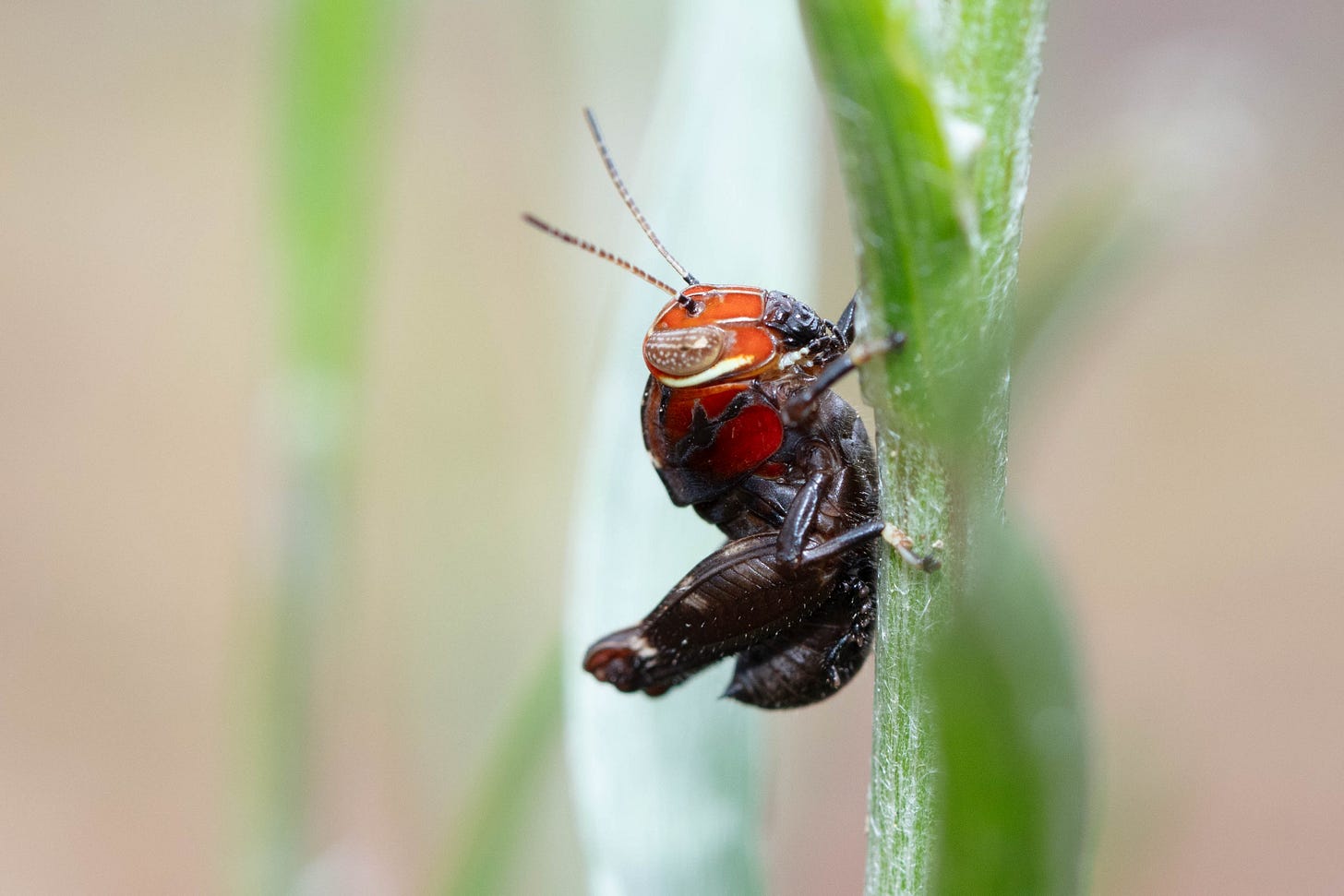
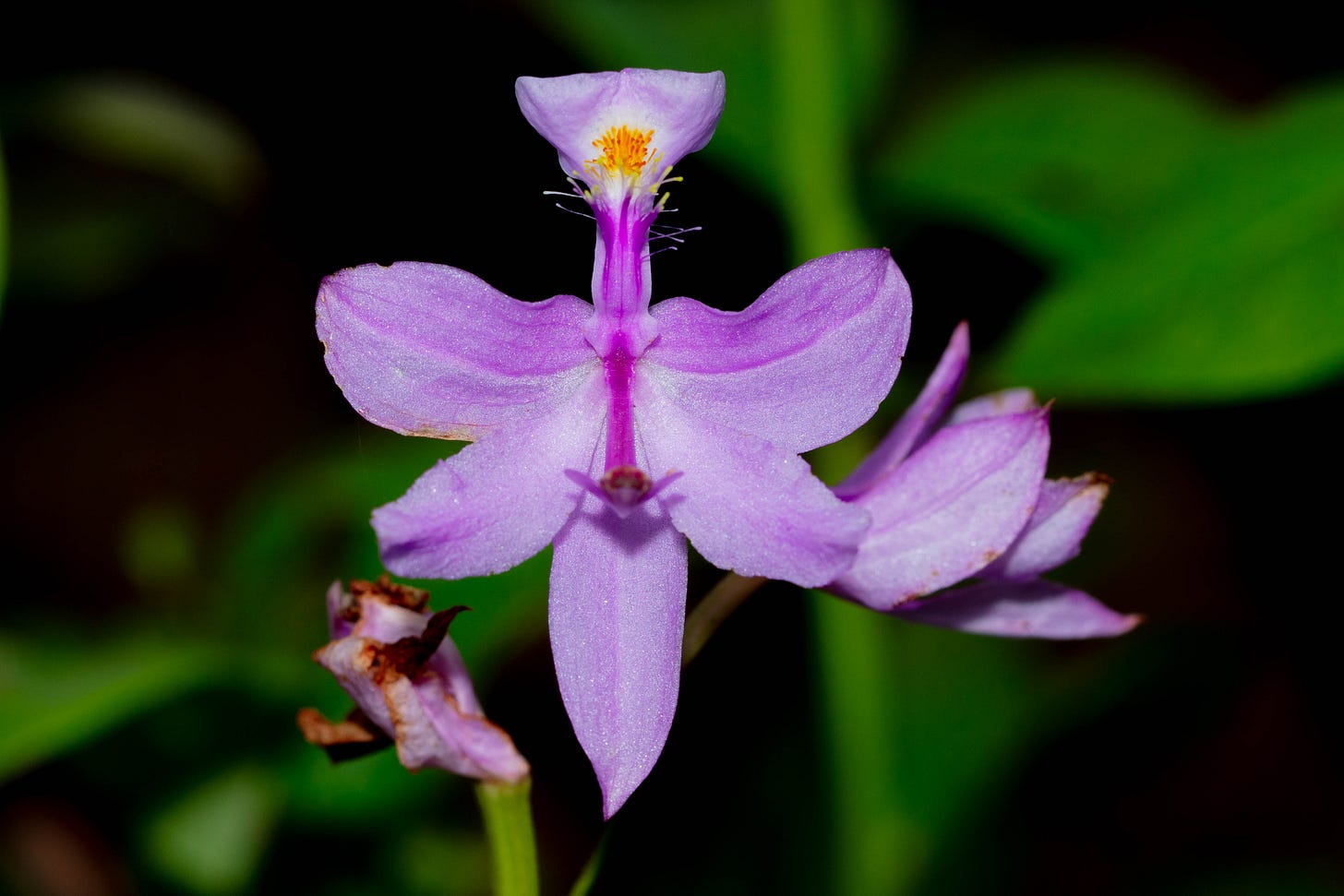
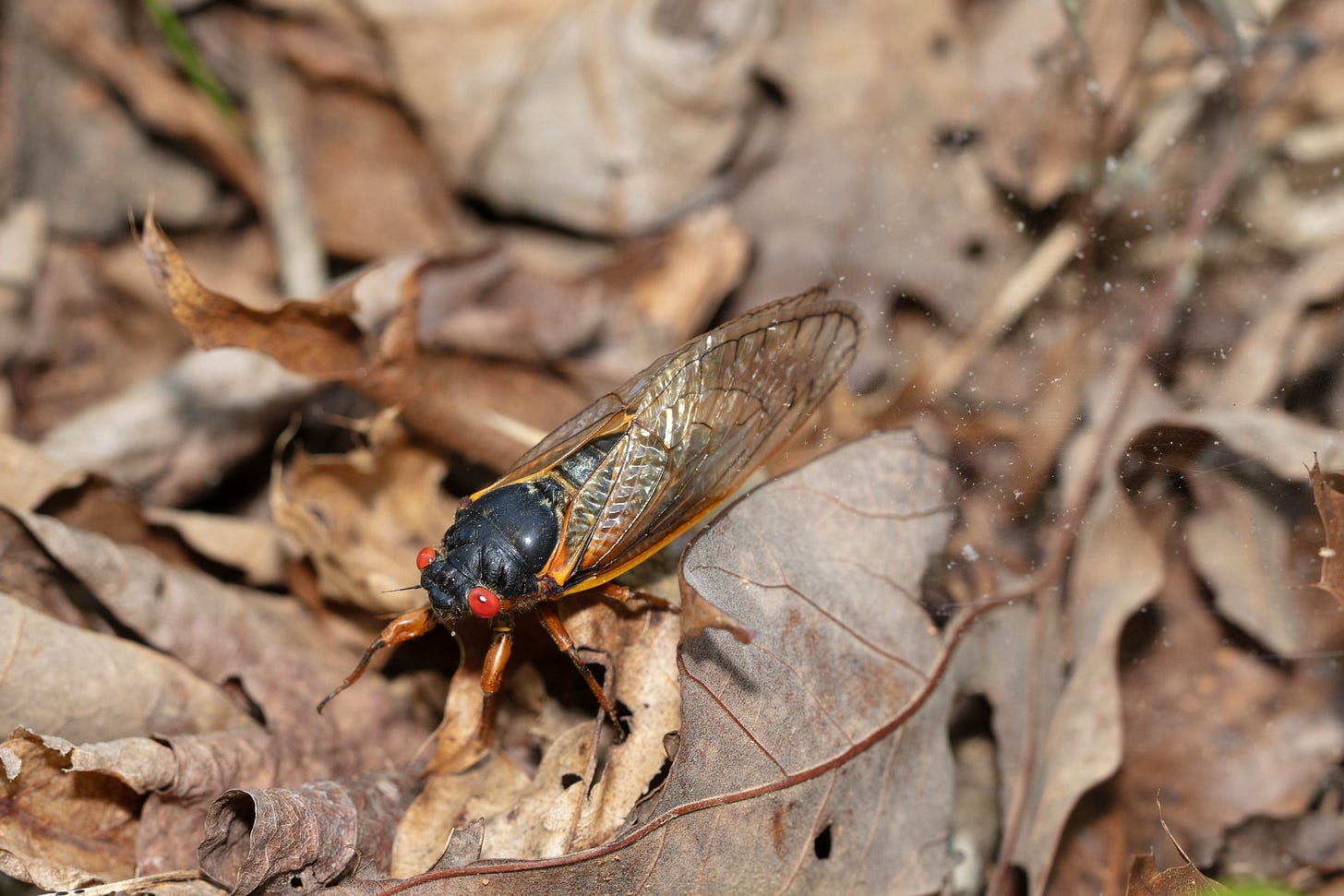
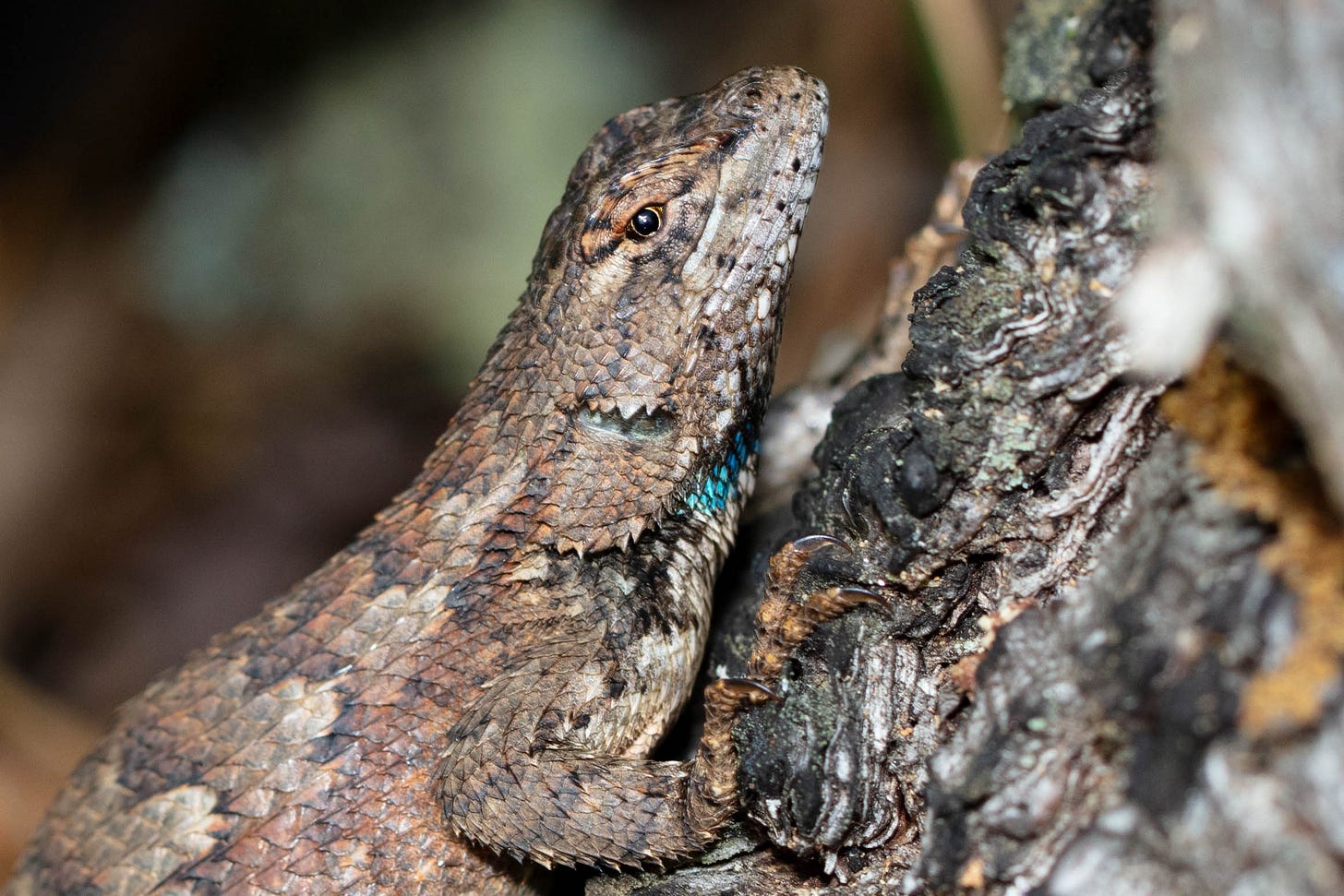
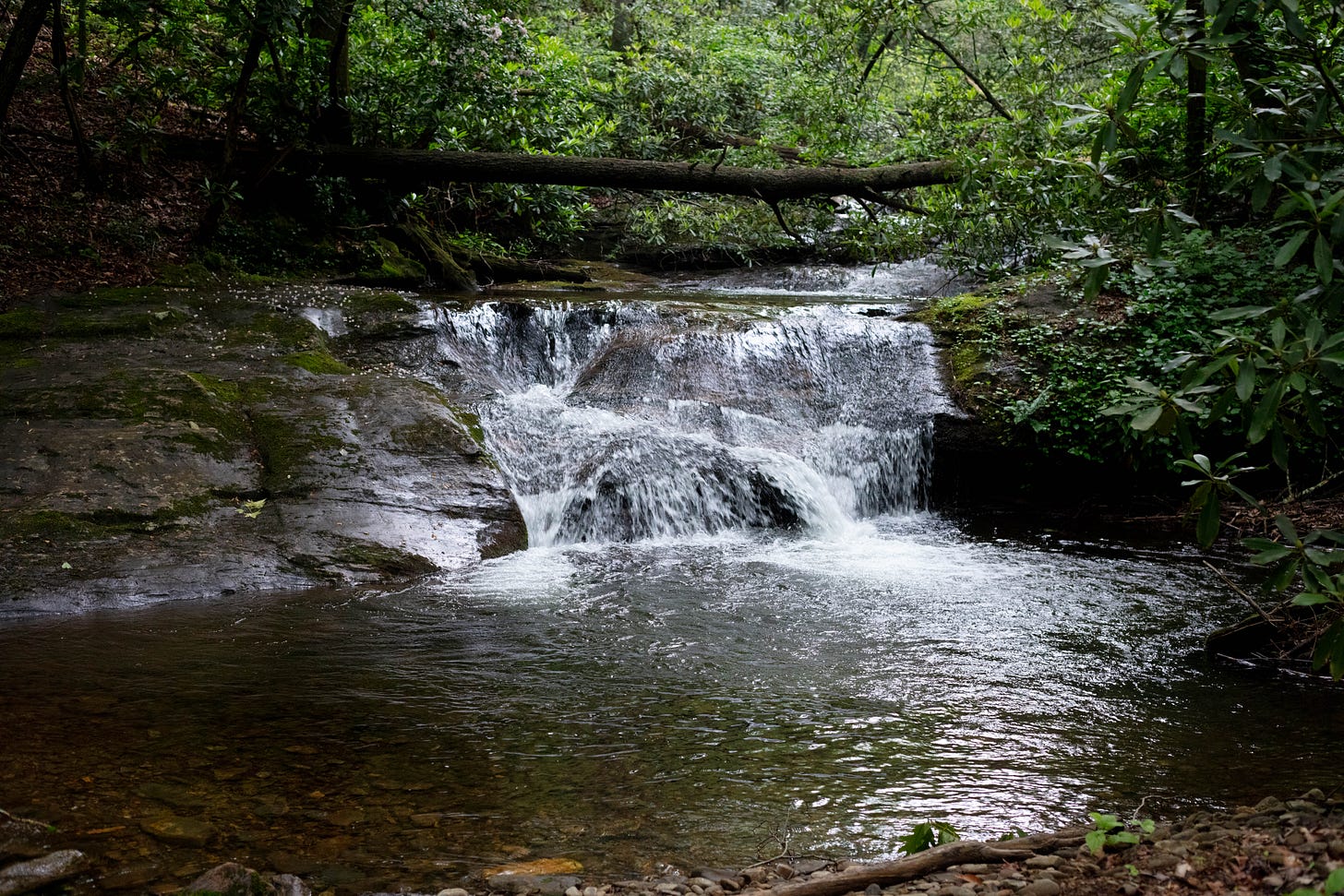
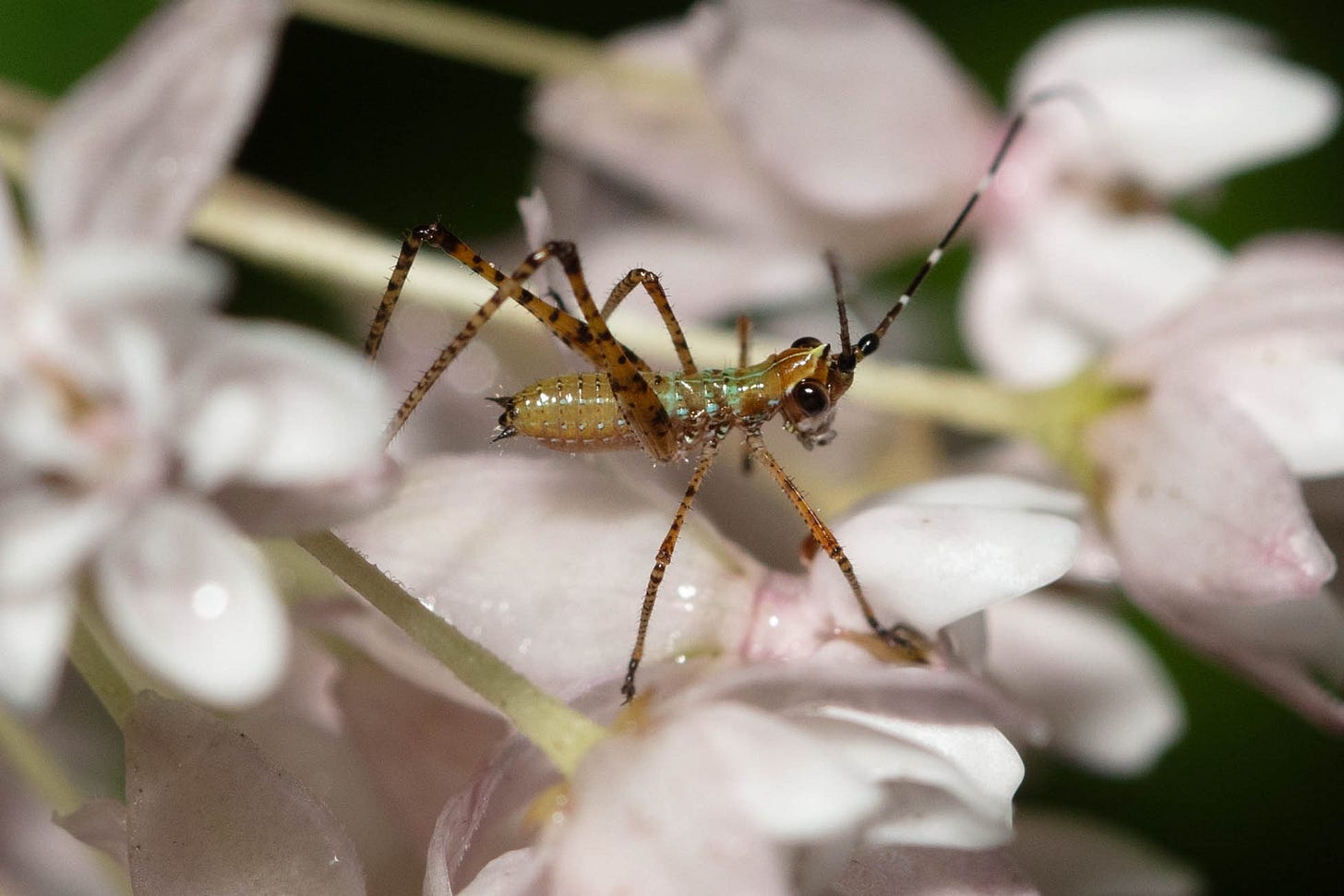

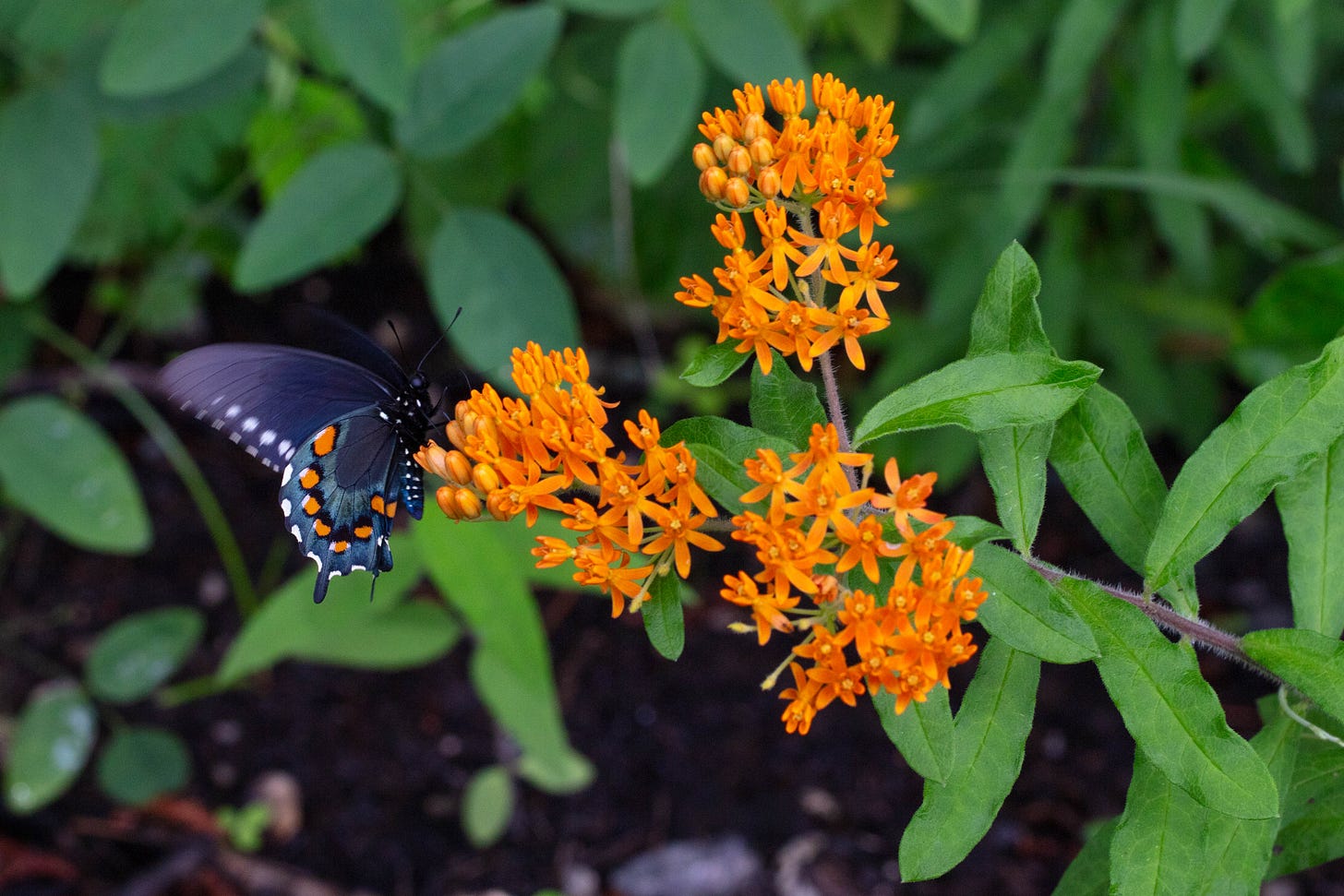
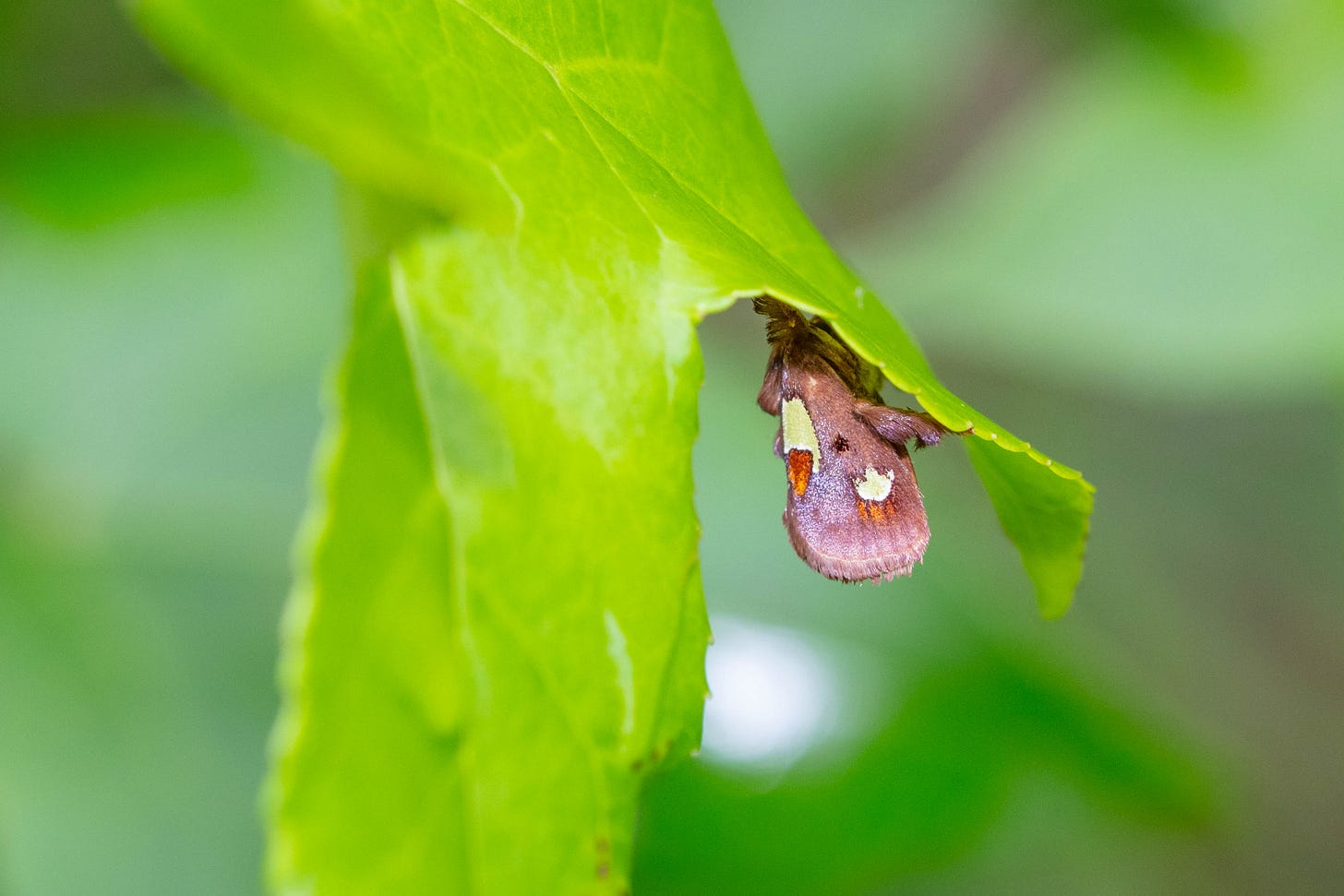
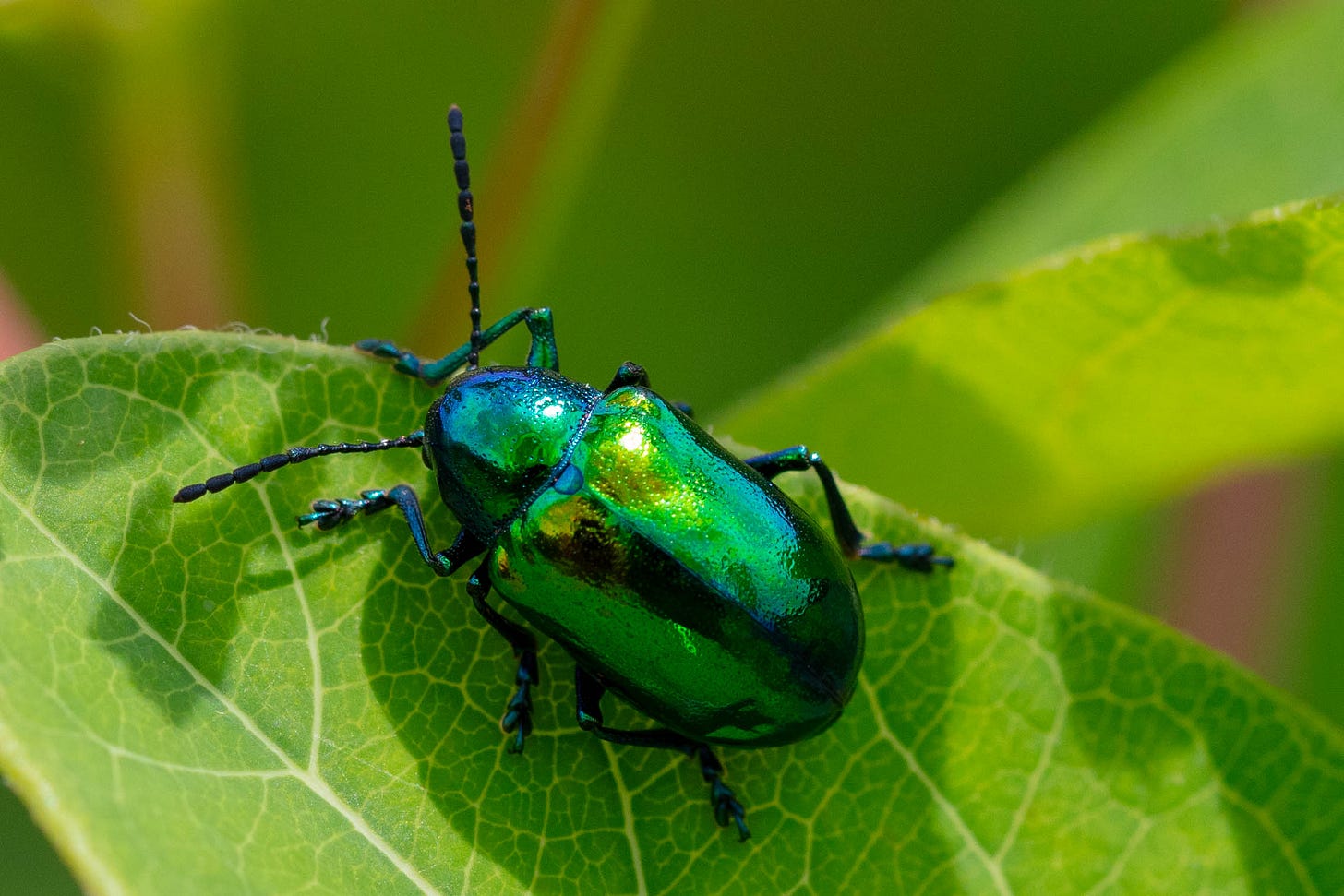
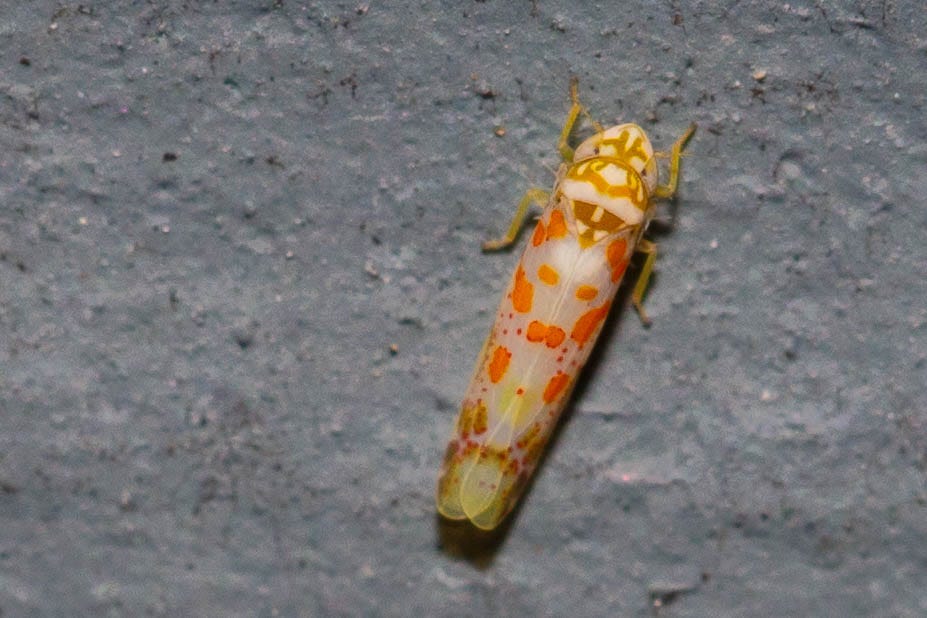
Such gorgeous photos -- I especially liked the grasshopper and fence lizard! Hope you feel better soon, and you're able to get outside and enjoy more summer adventures. Thanks for sharing these incredible close-up glimpses of nature!
I learn a lot from you. Be well.